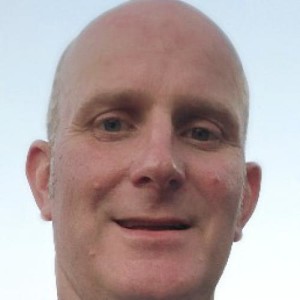IETF 112 took place in early November, where close to 1,200 people participated to further the IETF's mission of "making the internet work better." Working in parallel with the IETF is the Internet Research Task Force (IRTF), who focuses on longer term research issues related to the internet. The IRTF conducted a session at IETF 112 under the title of GAIA – Global Access to the Internet for All. This focussed on unlocking internet access for people in rural areas, particularly those in less developed countries. But developed countries also have their challenges in reaching those not yet online.
According to the 2021 edition of Facts and Figures from the International Telecommunication Union, 2.9 billion people, or 37% of the world’s population, are still offline. This is despite a surge in those going online in 2020 and 2021, largely due to the COVID-19 pandemic. Of the 2.9 billion still offline, the ITU estimates 96% live in developing countries. And even among the 4.9 billion counted as 'internet users', many hundreds of millions may only get the chance to go online infrequently, via shared devices, or using connectivity speeds that markedly limit the usefulness of their connection.
The GAIA discussion included a presentation by consultant Steve Song on The Problem with Spectrum. Steve discussed how the number of internet users is still increasing, but overall growth is slowing. The major reason for this slowing growth is that the more affluent people in the world are connected. As Steve noted, “we’ve connected the easy half of the world” while “the unconnected now are the people with the lowest ability to pay living in the most challenging areas often sparsely populated.”
The COVID-19 pandemic, Song said, taught us of the benefit of inclusion. And the benefit of having high rates of access in the community. From the ability to cope with lockdowns to remote learning and access to pandemic information. People without access fell further behind.
Cost is a major impediment in getting those not online, online. For those rich enough, they can afford the prices charged when telecommunications operators have paid high prices in auctions for spectrum auctions to mobile access. While the huge fees paid for spectrum access are great for a government’s revenue, the telecommunications companies have to recoup the fees paid from subscribers, inflating the cost and impacting affordability. To get greater access, Song said regulation was needed to allow smaller and niche market operators to provide internet access. Around the world there are some interesting initiatives that are allowing these smaller and niche market operators to provide lower cost access to internet services. Hence operators are going to invest in areas where they are getting the highest returns – higher density urban areas while poorer more remote areas are neglected. They also lock out smaller and niche operators.
Across Africa and other less developed countries and communities, one way of dealing with this is providing WiFi access in a community, which is much cheaper than access through mobile devices. Access through Television White Space spectrum, which is reusing television spectrum, is becoming more and more common across Africa too, although it’s more complicated than WiFi and also more expensive.
Another way of providing access to affordable spectrum is through International Mobile Telecommunications (IMT) spectrum, which countries such as Mexico, the US, UK and New Zealand are using to provide affordable access for certain communities or local communities through shared or unused spectrum.
In countries like the UK and New Zealand, they have allocated a portion of this now unused spectrum for community projects, including providing internet access for lower social economic communities.
In the UK the regulator Ofcom has issued two different types of licenses – a local access license and a shared access license. For Shared Access licenses, they give access to four spectrum bands which support mobile technology while Local Access licences provide a way for other users to access spectrum which has already been licensed to the UK’s Mobile Network Operators (MNOs) in locations where a MNO is not using their spectrum. As Song explained the spectrum is allocated on the principle of use it or share it. It is a big change, and the UK is a pioneer in this area. Following along similar lines is Canada, who is in the midst of a consultation on a shared access to spectrum for rural areas that is that is very much based on the UK approach.
In New Zealand, for a number of years Song explained, they have operated a managed spectrum park so rather than issuing a license in the 2.5 gigahertz spectrum to one operator for the entire country, 40 megahertz of spectrum is made available for local licenses at a minimal cost, which must be available to be shared, allowing small operators to deliver services via LTE and even 5G, allowing for much greater reach than WiFi would.
Greater access to the internet for all, in developed and developing countries, is essential in ensuring those on lower and modest incomes are not left behind when so much of our daily lives has moved online. Some of these initiatives are proving it is possible to provide affordable internet access even to those on modest incomes.


